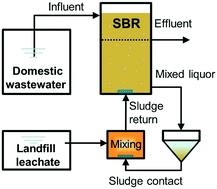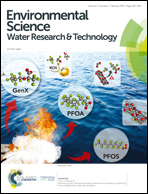Effect of blending landfill leachate with activated sludge on the domestic wastewater treatment process
Abstract
Free ammonia has recently been considered as a strong biocidal agent that has many benefits in wastewater treatment. Conventionally, hauling landfill leachate that contains a high-level of ammonia and organics to offsite domestic wastewater treatment plants is a way to achieve pollutant removal. Based on this, blending the leachate with adequate activated sludge (called “sludge contact”) can facilitate high-level free ammonia exposure. This study aims to investigate the effect of the sludge contact on domestic wastewater treatment. Three different co-treated levels, namely, 1%, 3% and 5% volumetric ratios of leachate to domestic wastewater, were tested with a long-term lab-scale reactor operation. Nitrogen and phosphorus removal performance, excess sludge production, and microbial community shifts were analysed during the stable operation. The results showed that co-treatment through the sludge contact significantly hurt nitrification yet had a negligible effect on denitrification and even enhanced the bio-P removal process. Analyses of the microbial community confirmed the disappearance of autotrophic nitrifying bacteria and the prevalence of denitrifiers and phosphorus accumulating organisms. Furthermore, the excess sludge yield could be reduced by 20–48% due to the added sludge contact unit.



 Please wait while we load your content...
Please wait while we load your content...